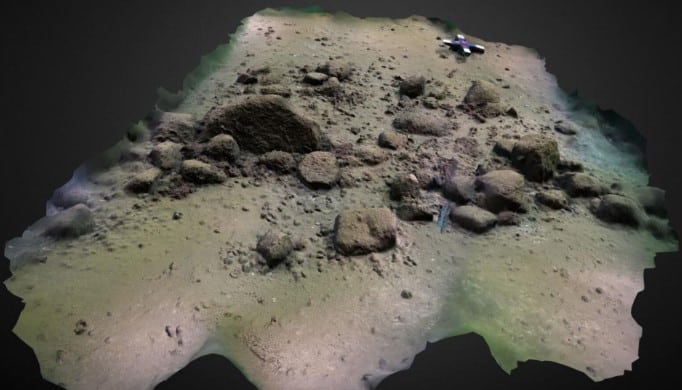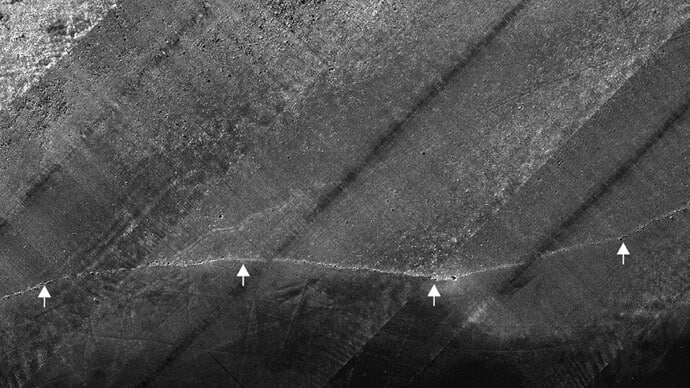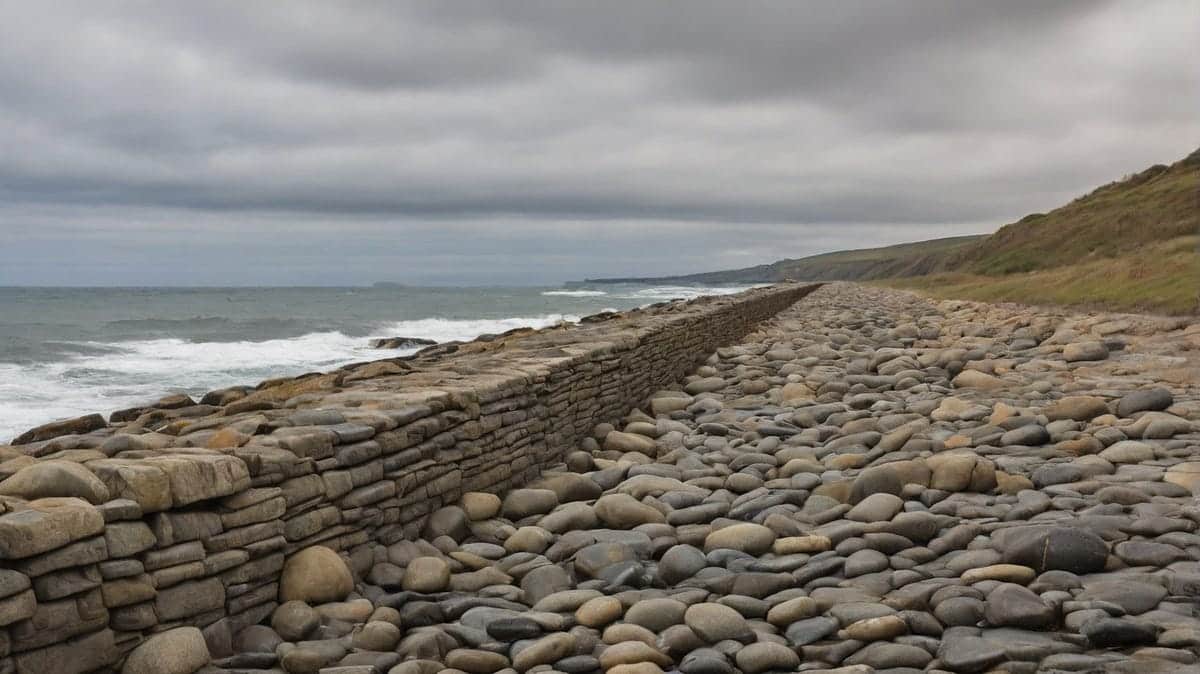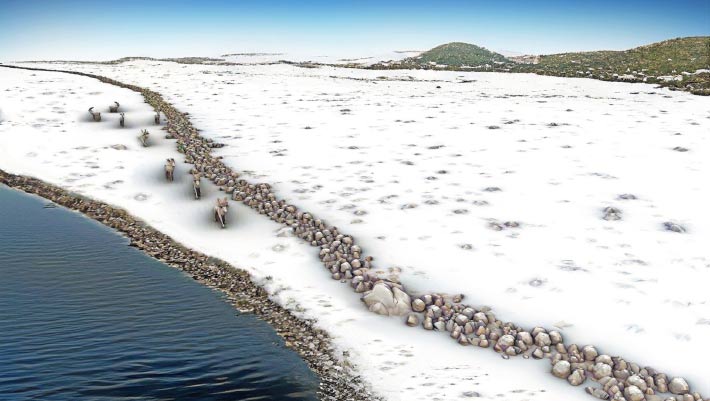“Blinkerwall”, Likely Europe’s Oldest Known Man-Made Megastructure, Is Found In The Baltic Sea
Countless fascinating artifacts from the Stone Age have been discovered over the years but one of the latest finds is particularly remarkable. Called Blinkerwall, it’s believed to be one of the oldest and largest man-made hunting structures in Europe. This ancient structure was uncovered from the depths of the sea, revealing new insights into our prehistoric past.
The discovery of Blinkerwall

In 2021, while exploring off the Baltic coast of Germany, scientists stumbled upon a submerged stretch of stones. After investigating, researchers now say that this unexpected discovery could be Europe’s oldest known man-made megastructure. They believe the wall, named Blinkerwall, was built by Stone Age hunters to trap and capture prey.
Blinkerwall is an impressive structure, consisting of 1,673 stones, including smaller rocks and larger boulders (around 300 ones). The wall extends for 971 meters along the seafloor and lies approximately 70 feet underwater in the Bay of Mecklenburg. On average, the wall stands about 1.5 feet tall.

The place where Blinkerwall was discovered is a complex seafloor formation shaped by geological, biological, and human activities. The variety of seafloor features makes it challenging for researchers to observe directly, limiting their understanding.
“The Blinkerwall represents an exceptional morphologic feature, which has not yet been documented elsewhere in the Baltic Sea,” the experts claimed.
In Europe, such large Stone Age structures are uncommon, partly due to preservation challenges on the densely populated continent. Over time, many such structures have been obscured or destroyed.
The discovery of Blinkerwall offers a rare and valuable glimpse into ancient engineering and hunting techniques that provide new insights into the lives of Stone Age communities.
Speculate on why it’s located deep under the sea

Researchers have ruled out natural events like glacial deposits or land movements as the cause of this ancient structure.
Instead, a study in the Proceedings of the National Academy of Sciences suggests that hunters from the past built the over 10,000-year-old wall to direct and trap reindeer, which typically follow straight landscape features such as cliffs or streams. This structure likely dates back to the Younger Dryas or early Pre-Boreal periods.
The Younger Dryas, which occurred around 12,900 to 11,700 years ago, was a time when the climate suddenly became colder after a warming period. This cold snap interrupted the warming trend that had followed the last ice age.
After the Younger Dryas came the early Pre-Boreal period, from about 11,700 to 10,500 years ago, marking a transition to warmer and more stable climate conditions. During this time, a vast ice sheet may have covered the region, and as the climate warmed, rising sea levels flooded many areas.
This ancient wall, ingeniously constructed by hunters, demonstrates human adaptability during times of significant climate change. It highlights how early humans used natural features to their advantage for hunting and survival.
Consider the reason it was built

According to the researchers, the most likely use of the Blinkerwall is to drive herbs of large ungulates into a controlled area. “Based on the information at hand, the most plausible functional interpretation for the Blinkerwall is that it was constructed and used as a hunting architecture for driving herds of large ungulates,” the scientists wrote in their paper.
Some researchers also discussed the timing of the Blinkerwall’s construction, noting that if it was indeed used for reindeer hunting, it must have been built during the Pre-Boreal or late glacial period. They explained, “If the Blinkerwall served as a driving lane for the reindeer hunt, the terminus ante quem for its construction is the Pre-Boreal or late glacial period.”
Ashley Lemke, an underwater archaeologist from the University of Wisconsin-Milwaukee who wasn’t part of the study, shared her insights with Science’s Andrew Curry. She explained, “Hunters tapped into the natural behavior of the animals and created their own linear feature. It’s not an obstruction, it’s a trail. They follow it to where the hunters are waiting.”
“When you chase the animals, they follow these structures—they don’t attempt to jump over them,” Jacob Geersen, the study’s lead author and a senior scientist at the Leibniz Institute for Baltic Sea Research, tells the Guardian’s Ian Sample. “The idea would be to create an artificial bottleneck with a second wall or with the lake shore.”
This discovery suggests that early European hunter-gatherers had a more sophisticated impact on their environment than previously thought.
Vincent Gaffney, an archaeologist at the University of Bradford, explained to New Scientist, “Such a find suggests that extensive prehistoric hunting landscapes may survive in a manner previously only seen in the Great Lakes.” He added, “This has very great implications for areas of the coastal shelves which were previously habitable.”

